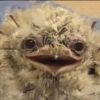Hello all!
A little background first. As some of you may or may not know, I recently captured a small colony of Cerapachys ants, which are related to Dorylus. When I caught them, some of the workers were carrying eggs (and only eggs), which were seemingly lost during the catching process. I noticed, recently that the colony appears to be in a "nomadic" phase? as they choose one location to nest (usually a test tube with soil) for a day or for at least a few hours, before leaving and parading around the enclosre (queen included). When they are moving around, they refuse all food, but once they have settled down again, they eagerly devour fresh, cut-open roaches. Do you think this is a sign of Cerapachys having brood cycles? and since they lost their eggs, will the queen wait until the next cycle of lay again? What are your thoughts?

















